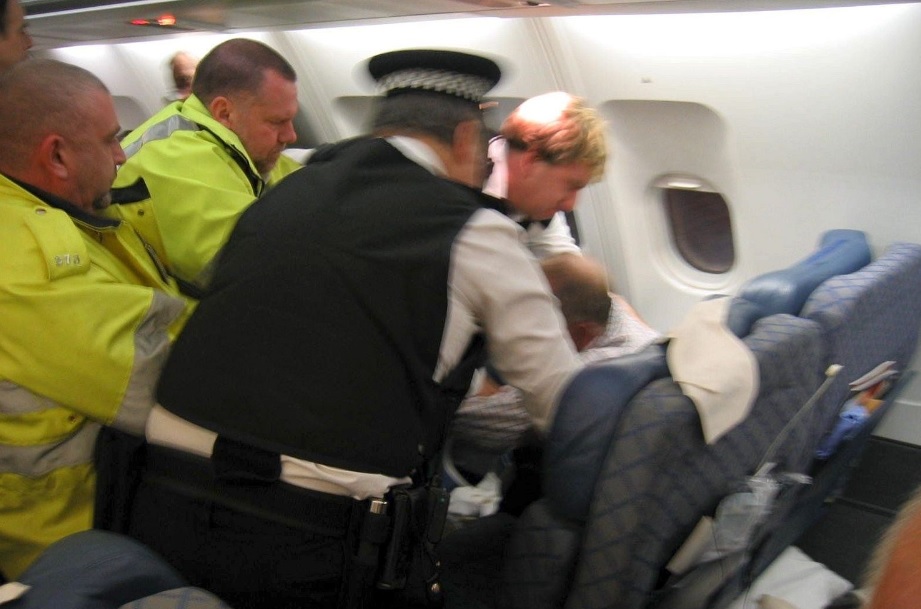One unintended consequence of the coronavirus pandemic has been an increase in the number of verbally or physically abusive behavior on aircraft in both North America and Europe, while other parts of the world appear to be easing frustration in the air for now. CNBC writes.
The spread of scenes, succinctly described as “air fury”, is depicted by some passengers, which almost immediately travels around the world, destroying the image of the airlines, ultimately reducing the number of passengers.
The United States and Europe top the statistics
Before the pandemic, US airlines received only 100-150 reports of unruly passengers on average for the year.
According to the US Federal Aviation Administration, there were nearly 6,000 such cases in 2021, about 72 percent of which were related to the wearing of masks. This figure far precedes the number of accidents from previous years.
The problem is widespread in the United States, said Shim Malmquist, a visiting lecturer at the Florida Institute of Technology at the College of Aeronautics. This is partly due to the excessive politicization of the epidemic here. Regardless, American passengers are generally considered more problematic by most flight attendants.
In Europe, too, passengers cause a huge scandal. There have also been high-profile accidents on flights from Spain, Scotland, Amsterdam and Glasgow.Major Australian airlines launched a joint campaign in 2021 after the number of passengers behaving inappropriately became unbearable. To curb this, videos encouraging proper mask wearing and respectful behavior and captions for the airport will be placed in more crowded locations.
They are quieter in Asia
According to Jeffrey C. Lowe, CEO of Hong Kong-based Asian Sky Group People on the continent were wearing masks even before the pandemic, which is a health goal they agree with. But here, too, the perception of what constitutes a violation of personal freedoms is different. Wearing a mask is an accepted practice in many Asian countries to prevent the spread or capture of diseases.
Korean Air, for example, has noted that the number of unruly passengers is not prominent, in part due to the social background in which people voluntarily wear face masks. Malmquist agrees that the issue is “largely of cultural origin”. At the same timeWe cannot rule out the possibility that flights are still restricted in Asia and that passengers who choose to travel are subject to strict supervision.”Additionally, there are far fewer people traveling in Asia to entertain than on a business trip.

However, a Japan Airlines spokesperson said: “We will not share matters with the media on board.” This may be the reason for isolation Online media reports have shown that many Japanese airlines have already had misfortune in flight due to the masks.
According to the nonprofit Nippon.com, in 2020, a low-cost Japanese airline Peach Aviation had to install an unplanned domestic terminal to get a passenger off the plane. The man, dubbed “the crusader without a Japanese mask”, was arrested several times, according to local reports, because he refused to wear a mask on the deck of the boat or in public places.
A career in “air rage” on social media
Even if airlines refuse to make a statement, passengers will do so instead, posting every week on social media platforms right away, so news portals will be notified.
Twitter users, for example, have posted “air rage” and accidents involving unruly passengers more than 117,000 times during the pandemic. According to the social media management company Hootsuite.
Here’s a video of “Air Fury” from December of last year, the restrained unobtrusive passenger in the Marshal as well as the flight attendant:
WATCH: An overnight Los Angeles-bound flight to OKC has been diverted to an unruly passenger on board. This passenger reportedly assaulted a flight attendant and an air marshal. Oklahoma City police arrested him. Tweet embed
Video Courtesy: DJ Joo pic.twitter.com/DoznDqw847
– Jason Hackett (@KOCOJason) December 10, 2021
However, only a small percentage of mentions on Twitter were of Asian origin. In addition, many Asian entries have passenger incidents outside the region. The data showed that most of the signals in Asia came from users in India, Japan and Indonesia.












































